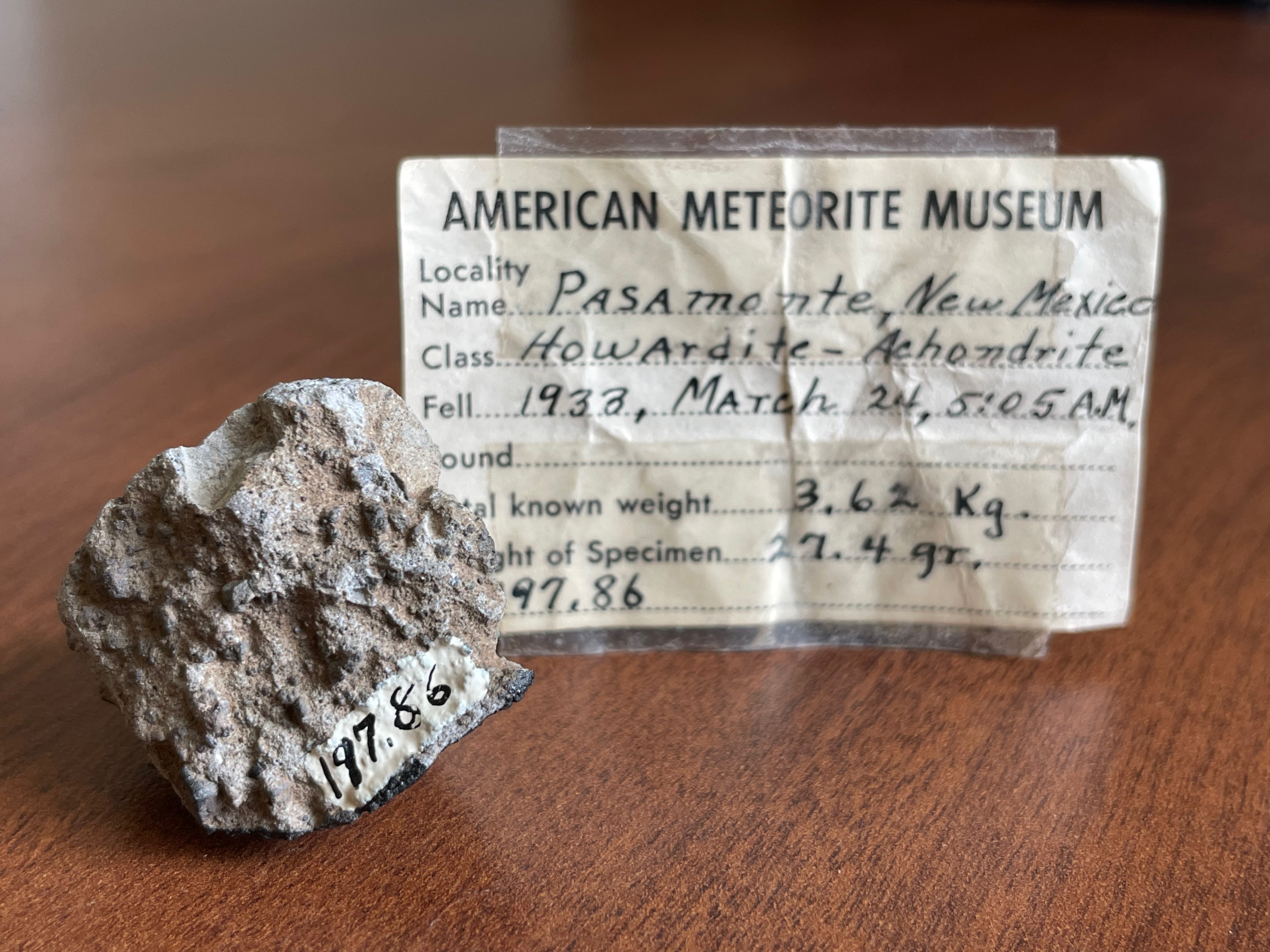Pasamonte, achondrite
Pasamonte is an unusual meteorite. Early work pegged it as a polymict eucrite, but more recent studies have shown that its oxygen and chromium isotopic signatures differ from most eucrites and other HEDs. Some geochemists have attributed these differences to processes on the HED parent body, but others have suggested that that it is from a different parent body altogether. We do not currently know for certain if Pasamonte and a few similar ‘eucrites’ are from the HED parent body, or if they came from a different planetesimal.
A summary of some of the work done on Pasamonte, by NASA JSC.
Nininger Popular Astronomy 1934, Nininger Popular Astronomy 1936.
The following stone was part of the collection of Dr. Donald Rathbun, a meteorite collector and hunter working out of El Paso, Texas. Don was responsible for the recovery of a number of new meteorites from Mexico and the US, including Barrilla.
This stone weighs a little over 27 grams. It still has its original American Meteorite Museum label, and is numbered 197.86. The back of the label reads: One of the rare forms that show no nickel-iron grains.


 Since the weight on the label roughly matches the weight of the specimen, it appears that this stone was either broken by one of the ranchers who found it (see Nininger’s account of the fall in Find a Falling Star), or was divided by Nininger before it was catalogued.
Since the weight on the label roughly matches the weight of the specimen, it appears that this stone was either broken by one of the ranchers who found it (see Nininger’s account of the fall in Find a Falling Star), or was divided by Nininger before it was catalogued.
A little more about this stone: H.H. Nininger’s 1950 collection catalogue lists nos. 197.84 and 197.85, but this stone (197.86) is missing, so this specimen was deaccessioned by Nininger prior to 1950.
Nininger founded the American Meteorite Laboratory in Denver, and worked for the Denver Museum of Natural History from 1937 to 1946. In 1946, the Niningers moved to the iconic Meteor Crater Observatory on Route 66, opposite Meteor Crater, re-christening it the American Meteorite Museum. The American Meteorite Museum was located in that building until 1953, when they moved to Sedona, Arizona.
Since this specimen bears an American Meteorite Museum label and was deaccessioned prior to 1950, I believe it was sold between 1946 and 1950 — while the Niningers operated the museum on Route 66, before the catalogue was published. I do not know for certain that the Niningers were not printing American Meteorite Museum labels before they founded the physical museum, but I do not think it is likely: first edition copies of A Comet Strikes the Earth (1942) list H. H. Nininger as the Director of the American Meteorite Laboratory, 635 Fillmore Street Denver, Colorado.